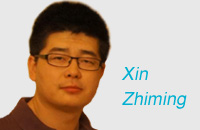Challenges ahead for income distribution reform
(chinadaily.com.cn) Updated: 2012-12-21 21:34The long-awaited plan for income distribution reform, which was supposed to be released at the end of 2012, has gotten a lot of attention.
The income distribution reform concerns not only China's economic structure transformation, but also the stability of Chinese society.
There are four big challenges behind this critical plan, said an article from the 21st Century Business Herald
The government should firstly break the SOEs' monopoly in the marketplace to make way for a normally developed market that promotes competition and innovation. Most senior executives of SOEs are not only managers of the behemoth businesses but also are government officials. The dual identities give them unique advantages as managers and much higher incomes as civil servants.
The SOEs' monopoly also means these powerful enterprises collectively form a strong opposition to the authorities who decide how much profits the SOEs should hand in to the government to improve public welfare. So far, the proportion of profits handed in is quite low.
Second, the government should make its spending more transparent and make the annual budget more specific and easier for the public to understand. The public deserves a bigger say in the oversight of the making and implementation of the budgets.
Third, the government must transform its role from a powerful administration to a public-service provider and construct a fair nationwide social security network as soon as possible. The different welfare systems for people from different regions in China further aggravates the income gap. The unbalanced distribution of public resources, such as education and medical care, is another cause of the income gap.
Last but not least, taxation has always been an effective way to adjust national wealth as long as the most of rich people's income are taxable. The problem is that many rich Chinese have plenty of ways to evade taxes. The more money one earns, the lower proportion of his or her income is taxable.
In short, SOEs, governments' budgets, welfare and public services, and taxes are the main challenges of the income distribution plan. And the interests groups behind each of these challenges are evidently the main opponents of income distribution reform. How well the reform will be implemented will be determined by the results of the fights between reformers and the anti-reformers.












